Touching base daily by telehealth helps BMT patients recover more quickly
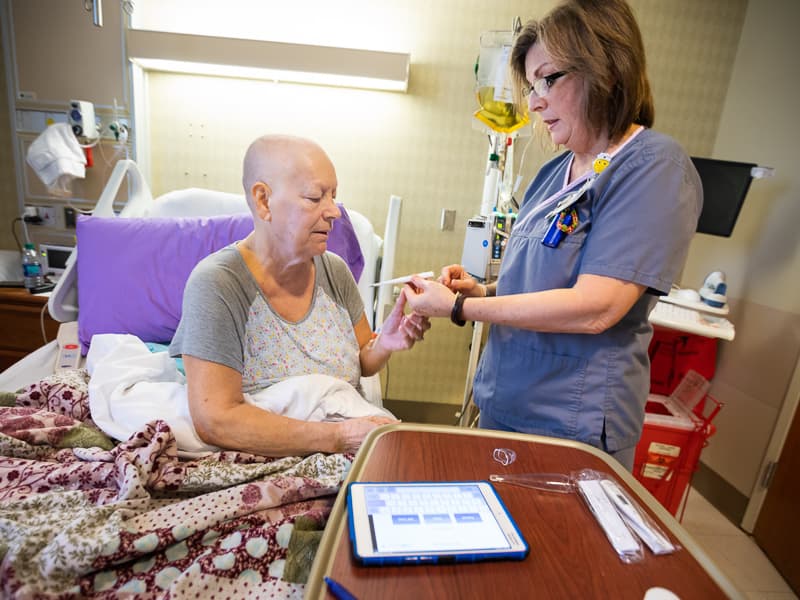
The ability to daily monitor a bone marrow or stem cell transplant patient once they’re home is a safety net that’s paying dividends for patients and staff, say members of the University of Mississippi Medical Center Bone Marrow Transplant unit.
The unit, a part of the UMMC Cancer Institute’s Interdisciplinary Hematologic Malignancies Program, uses remote patient monitoring tools developed by the UMMC Telehealth Center that were adjusted to specifically monitor transplant patients after they leave the hospital.
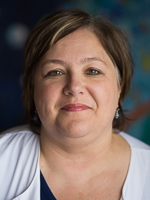
“We’re trying to improve patient outcomes,” said Pam Farris, nurse manager for the BMT unit. Early results show a decrease in 30-day readmissions and a decrease in length of stay.
“We can pick up acute issues earlier, then we can do something different,” said Dr. Carter Milner, assistant professor of hematology/oncology and a BMT physician. “We can adjust medications, hold a medication. This allows us to send them home and have eyes on them every day.”
Previously patients would need to stay near the hospital for 60 to 100 days after a transplant. That is a burden for those from out of town, who would stay in a nearby motel. Because their immune systems are so compromised by the transplant, patients cannot stay in community-style accommodations.
The ability to monitor from home, coupled with a mobility program the unit started during the hospital stay, also means staff have been able to discharge patients sooner.
Early comparisons show a reduction in 30-day readmissions, from nine readmissions in 2016 to one from March (when the program started) through December 2017.
The average length of hospital stay also dropped from 27 days to 22. Doctors and staff attribute that to the monitoring program to mobility program they started at about the same time.
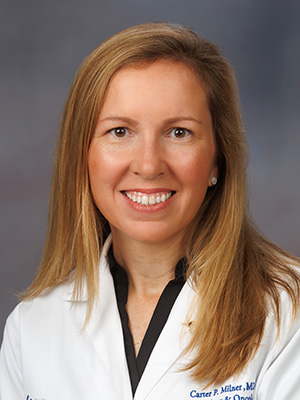
“We can discharge patients sooner and have confidence we’re going to have great outcomes,” Milner said. “It’s a valuable part of the treatment plan.”
Bone marrow or stem cell transplant is a therapy option for some adult and pediatric patients, usually those with specific types of leukemia, lymphoma or multiple myeloma.
Transplants are designed to replace damaged bone marrow with healthy marrow or stem cells. Chemotherapy and sometimes radiation therapy are used to destroy the diseased marrow. Then healthy stem cells or bone marrow cells are infused where they migrate to the patient’s marrow and began forming healthy red and white blood cells and platelets.
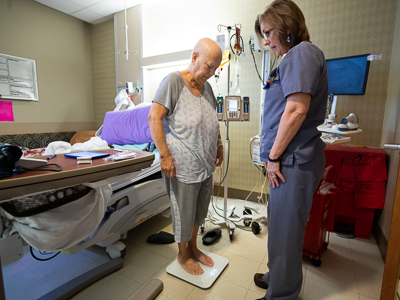
For Shirley Crnkovic, who received a transplant recently, returning to her Ferriday, La., home means the ability to see her family and watch birds. “I love taking pictures of my birds,” she said a few days before her discharge.
While rain has hampered those plans, “just being home and being in my own space helps,” she said recently, a few days after family gathered to celebrate her birthday.
Crnkovic was diagnosed with acute myeloid leukemia on Oct. 18. Weeks of treatment preceded her transplant.
Before she left the hospital, Rebecca Smith, an outpatient nurse on the transplant floor, reviewed the equipment with her and showed her how to use it. Patients receive a Bluetooth-enabled scale, blood pressure cuff and oximeter and a smart tablet. The kit includes a thermometer but patients have to enter that reading manually. They also leave with a toll free number to call any time.
From home, Crnkovic daily uses the equipment to transmit:
- Weight
- Temperature
- Pulse and oxygen levels
- Blood pressure
In addition she answers a series of questions and can ask questions if needed. The tablet includes dozens of education modules on nutrition, infection, transplant, exercise and more.
“This gave me peace of mind,” Crnkovic said of the monitoring equipment. “I like knowing they’re getting this right way and not waiting on a home health nurse.”
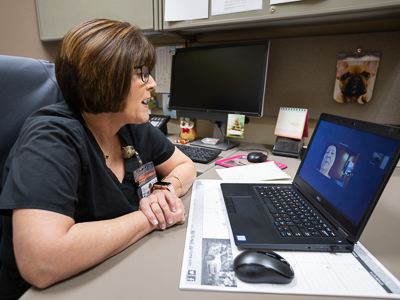
Sherry Allen, a nurse and transplant coordinator, reviews the data daily and said she may call if she sees a difference in vitals. She also can review vitals over several days and compare them. Other BMT nurses review the data on weekends.
“For example, weight loss may indicate dehydration. I call to chat and see if we need to get home health in to induce fluids,” she said.
She does some trouble shooting too. “All vitals fluctuate a little but not outside parameters. If they do, we take action,” she said. Sometimes her call reveals the patient accidently wore shoes when they weighed, sometimes they exercised before taking their blood pressure.
“If needed, we have the capability to do a video conference with each patient,” she said.
“The biggest thing is we can take action before it’s critical,” Allen said.
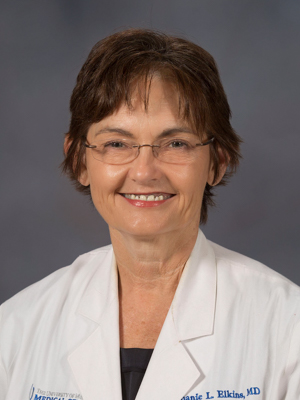
Dr. Stephanie Elkins, professor and chair of the Division of Hematology/Oncology, said initially they discussed monitoring through the UMMC Telehealth Center, named a National Telehealth Center of Excellence by the federal Health Resources and Services Administration.
They soon found transplant complexity meant they needed to employ nurses with a background in the procedures.
In that capacity, “Sherry has made a huge difference to our patients,” Milner said.
For example, she said, transplant patients go home with a suppressed immune system and on antibiotics.
“Even a slight fever could be a sign of infection and we’d need to put that patient in the hospital,” Milner said. “That might not be a sign of severe illness to a local ER physician who doesn’t know about the transplant background.”
From eight to 10 patients may have monitoring equipment at any time. Patients usually keep the equipment for six to eight weeks, depending on how long they need it, returning all but the thermometer.
The pilot project, coordinated with the Telehealth Center, has proven its worth, Milner said. She expects to continue using it with transplant patients and hopes to add other services.
For Crnkovic, the peace of mind is worth the few minutes she spends each day taking her vitals.
Her clinical staff? Allen summarizes a common response: “We’re glad to have this to help us evolve into better outcomes and better care.”


